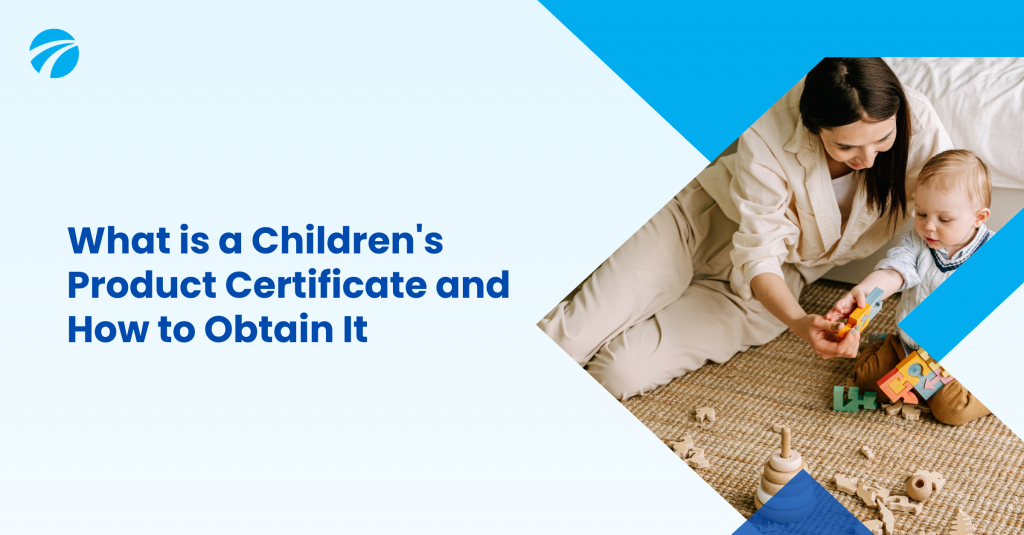If you’re an importer or someone who outsources children’s products from abroad, it’s important to understand the regulations around Children’s Product Certificates (CPCs). CPCs are required for certain types of children’s products to ensure they meet federal safety standards. This blog will cover everything you need to know about CPCs, including what they are, which products require them, how to obtain them, and why they’re important for children’s safety.
What is a Children's Product Certificate?

A Children’s Product Certificate (CPC) is a document that certifies that a children’s product meets toy safety standards. The purpose of a CPC is to ensure that children’s products do not pose any hazards to children, such as choking, suffocation, or strangulation. CPCs are required for certain types of children’s products and must be issued by a third-party testing laboratory accredited by the Consumer Product Safety Commission (CPSC).
Why is a Children's Product Certificate Important?
CPCs are important for children’s safety because they ensure that products meet federal safety standards. Without a CPC, you cannot legally sell certain children’s products in the United States. If a child is injured or killed by a product that does not have a CPC, the manufacturer could be held liable for damages. CPCs also protect importers and retailers from legal liability by ensuring that they are selling safe products. This is why it’s important to have proper quality control of toy products in place.
Which products require a Children's Product Certificate?
There are several types of children’s products that require a CPC, including:
- Toys and games
- Children’s Clothing
- Cribs and mattresses
- Strollers and car seats
- Children’s furniture
- Baby walkers and jumpers
- Children’s Jewelry
- Pacifiers and teethers etc.
If you’re unsure whether your product requires a CPC, you can check the CPSC website.
Related resources:
1. Plastic Toys Quality Control
How to Get a Children's Product Certificate
Obtaining a Children’s Product Certificate involves several steps. First, your product must be tested by a third-party testing laboratory accredited by the CPSC. The laboratory will perform various tests to ensure that your product meets federal safety standards, such as:
- Physical and mechanical testing to ensure the product is structurally sound and does not pose any hazards, such as sharp edges or small parts that can be swallowed
- Chemical testing to ensure that the product does not contain any harmful substances, such as lead or phthalates
- Flammability testing to ensure that the product is not a fire hazard
Once your product passes all the required tests, the testing laboratory will issue a CPC. The CPC must include information about the product, the manufacturer, the testing laboratory, and the testing results.
Children's Product Certificate for Amazon
If you are selling children’s products on Amazon, you must provide a CPC for each product you sell. Amazon requires sellers to provide a CPC for certain types of children’s products, such as toys and games, children’s clothing, and baby products. You can upload your CPC to Amazon’s Seller Central dashboard for each product listing.
It is important to note that Amazon may ask you to provide additional documentation to verify that your product meets federal safety standards. This may include test reports, labeling information, and other relevant documentation. It is important to keep accurate and up-to-date records to ensure that you can provide this information if requested. (Related: Amazon FBA Labelling & Packaging Requirements)
What Information Should Be Included in the CPC
A Children’s Product Certificate must include certain information to be valid. This includes:
- Identification of the product, including the model number, SKU, or other identifying information
- The manufacturer or importer’s information, including name, address, and contact information
- Identification of the testing laboratory that issued the CPC, including name, address, and accreditation information
- A statement that the product meets all applicable federal safety standards
- A list of all applicable regulations and standards, such as ASTM or CPSIA
- The results of all testing performed on the product, including physical and mechanical testing, chemical testing, and flammability testing
- A statement that the testing was performed in accordance with CPSC testing requirements
- The date that the CPC was issued
How Tetra Inspection can Help with Children's Product Certification
Ensuring that children’s products meet the necessary safety standards and regulations is crucial to protect children from potential harm. As a global quality assurance company with expertise in children’s toy quality control, Tetra Inspection offers tailored services to support the certification process of children’s products.
Our team of experts is knowledgeable in all major testing standards and regulations such as CPSIA, and ASTM, and can provide comprehensive testing and inspection services to ensure your products meet the necessary safety standards.
In addition to performing product inspections for children’s products, we also assist our clients with laboratory testing, which can give you the confidence you need to sell your products in the US and European markets. With our personalized approach, we can work closely with you to understand your specific needs and ensure that the certification process is efficient and effective.
At Tetra Inspection, we understand the importance of protecting children’s safety, and we are committed to providing reliable and trusted services that help ensure your products meet the highest standards for quality and safety.
Contact us today to learn more about how we can help with the certification process of your children’s products.

